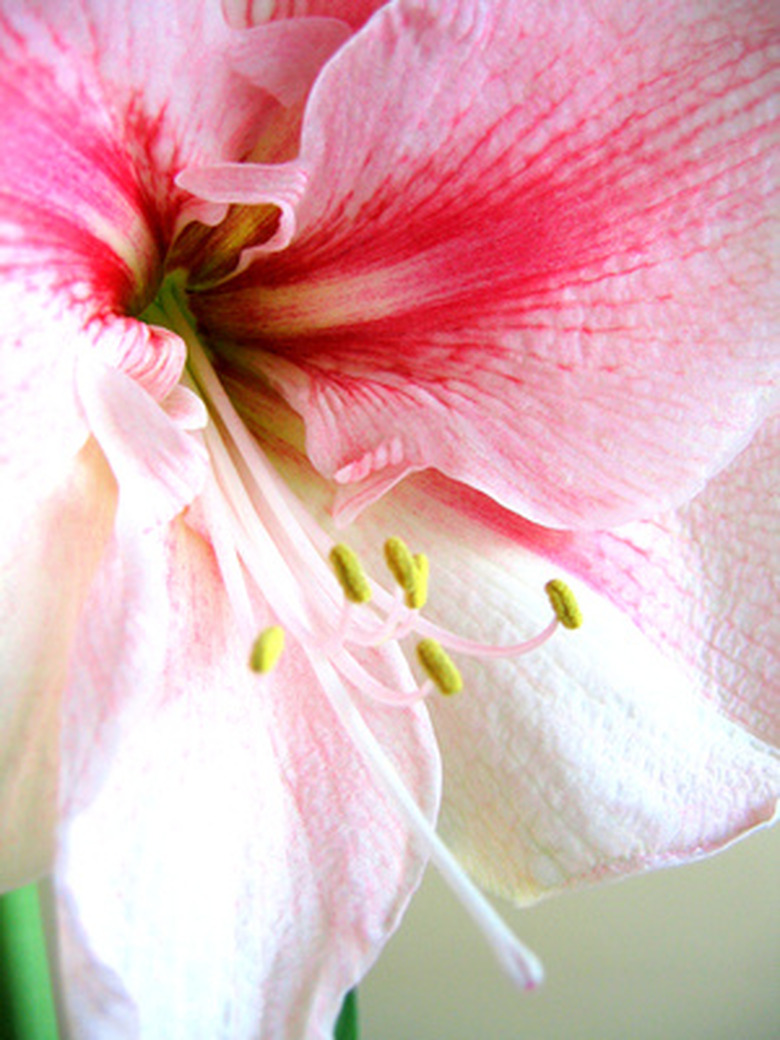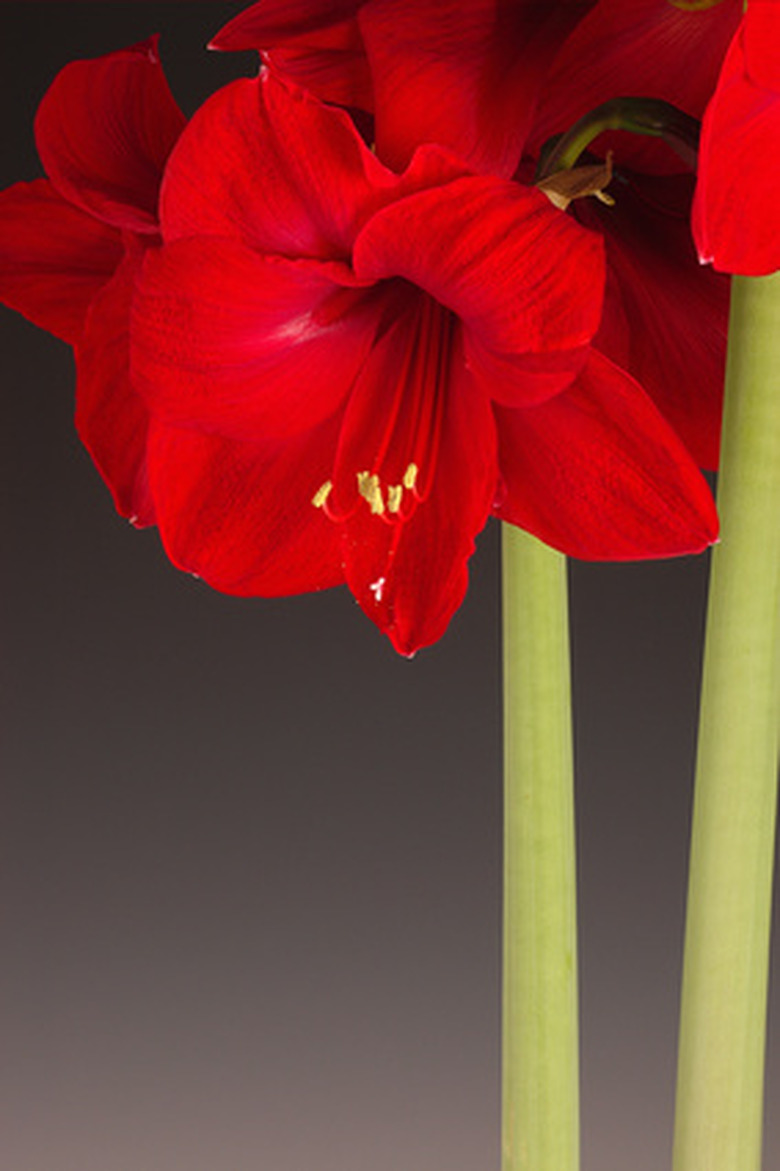Amaryllis History
The genus name Amaryllis comes from the Greek word "amarysso," which means "to sparkle." In Greek mythology, it was the name of a shepherdess who shed her own blood to prove her true love, and in so doing inspired the naming of this bright red flower. Many different cultivars claim the name amaryllis and membership of the Amaryllidaceae family.
Early History
Some botanists believe that the Portuguese probably brought the amaryllis bulb to Europe around the early 16th century. It is not surprising that Portugal, Spain and Italy were among the first European countries to introduce the amaryllis belladonna, as it was explorers from these countries who traveled far and wide, returning home with new discoveries to please the wealthy patrons who paid for their expeditions. The presence of amaryllis belladonna in places like the Canary Islands and Madeira gives rise to the theory that its importation may have paralleled the history of the sugar cane trade as well as the slave trade. Amaryllis belladonna arrived in England around the early 18th century.
Names
During the 18th century, amaryllis plant bulbs were labeled as lilies, which may explain some of the common names in use today. In South Africa, it is the March lily; in the United Kingdom, it is the belladonna lily or the Jersey lily; in Italy, it is called the Madonna lily. The Portuguese name of the amaryllis means "St. Joseph's Staff." This is a reference to the legend that the staff of St. Joseph burst into bloom as a sign of his selection as the spouse of the Virgin Mary.
- The genus name Amaryllis comes from the Greek word "amarysso," which means "to sparkle." The presence of amaryllis belladonna in places like the Canary Islands and Madeira gives rise to the theory that its importation may have paralleled the history of the sugar cane trade as well as the slave trade.
South American Origin
The German botanist Eduard Friedrich Poeppig (1798 to 1868) spent many years in Chile, where he discovered the amaryllis hippeastrum growing on a hillside in the course of a plant-hunting expedition in 1828.
Hybridizing
Some hybridizing of the amaryllis belladonna occurred in Australia during the middle of the 19th century. A cross between amaryllis belladonna and brunsvigia took place at Campden Park Estate, the home of Sir William Macarthur (1800 to 1882), an Australian botanist and viticulturist. Brunsvigia multiflora and amaryllis multiflora were among the hybrid results. Today they go by the description, x Amarygia.
Christmas Amaryllis
Holland is a major grower and exporter of the amaryllis, which is in especially high demand at Christmastime for its festive colors. Dutch and South African varieties of this Christmas favorite include bright red, pink and white amaryllis flowers. Many of the holiday varieties belong to the Hippeastrum genus and are native to South America. Christmas amaryllis are products of forced blooming.
- The German botanist Eduard Friedrich Poeppig (1798 to 1868) spent many years in Chile, where he discovered the amaryllis hippeastrum growing on a hillside in the course of a plant-hunting expedition in 1828.
- A cross between amaryllis belladonna and brunsvigia took place at Campden Park Estate, the home of Sir William Macarthur (1800 to 1882), an Australian botanist and viticulturist.

